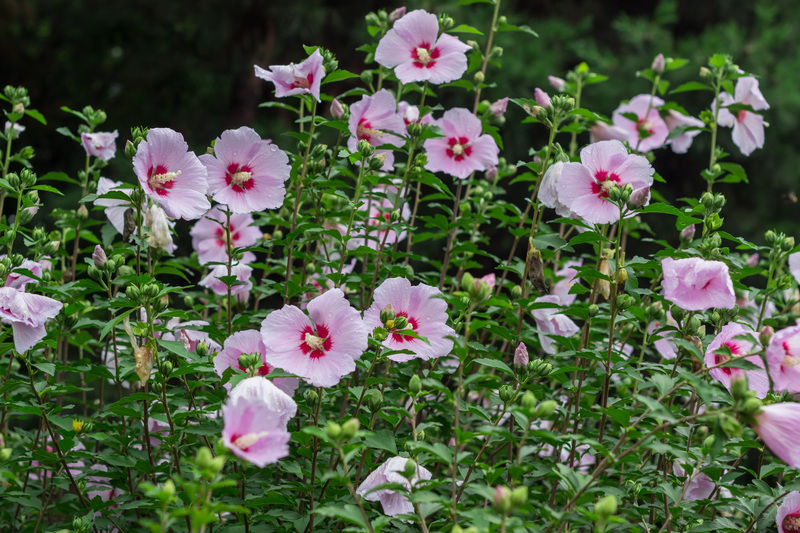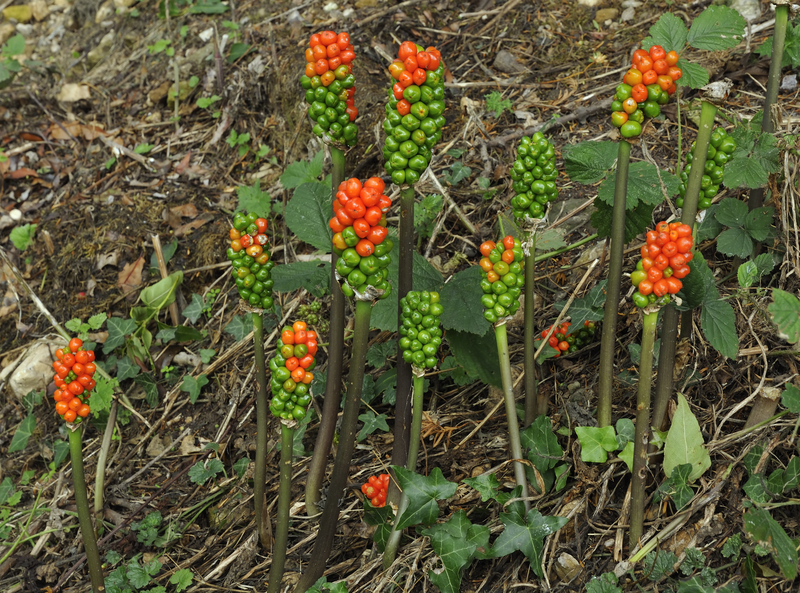Hedge Trimming Secrets for Elegant Shapes
Posted on 15/08/2025
Hedge Trimming Secrets for Elegant Shapes
Are your garden hedges looking overgrown and shapeless? Do you dream of transforming those untidy green walls into stunning, graceful designs? Hedge trimming for elegant shapes is an art that anyone can master with the right techniques, tools, and knowledge. In this comprehensive guide, you'll discover expert secrets to sculpting breathtaking hedges that boost your garden's elegance and curb appeal.
Understanding the Art of Hedge Shaping
Before you grab your shears, it's important to understand the principles behind elegant hedge design. Hedges serve both functional and ornamental roles in gardens, offering privacy, structure, and an enhanced aesthetic. But to attain that perfect, elegant form, you need more than just a quick trim.
What Defines an "Elegant Shape"?
- Defined Lines: Crisp, clean outlines draw the eye and showcase meticulous care.
- Smooth Curves: Curved hedges, arches, and domes add visual interest and softness.
- Symmetry and Balance: Well-matched sides or rhythmic repetition can elevate your garden's form.
- Appropriate Scale: The hedge should complement your garden without overwhelming it.
Elegant hedge trimming means sculpting your greenery with intention and style, rather than simply controlling growth.

Best Plants for Trimming into Elegant Shapes
Not all shrubs and hedges respond equally well to pruning. For stunning hedge shapes, choose species that produce dense, fine foliage, tolerate regular cutting, and regrow quickly.
Top Choices for Shapely Hedges
- Boxwood (Buxus): Classic and compact, perfect for geometric forms and topiary.
- Yew (Taxus): Exceptionally dense and forgiving for intricate trimming.
- Privet (Ligustrum): Fast-growing and resilient, ideal for hedges and curves.
- Hornbeam (Carpinus betulus): Strong structure with a regal appearance.
- Holly (Ilex): Offers a glossy finish and supports creative shaping.
Choose your plant based on your climate, soil, and desired appearance. The right choice ensures your hedge remains healthy while you sculpt its form.
Essential Tools for Professional Hedge Trimming
Using the proper tools is crucial for precise hedge shaping. Clean, sharp equipment leads to smooth cuts, less plant stress, and easier maintenance.
Must-Have Hedge Trimming Tools
- Hedge Shears: Manual or powered, these are essential for even shaping and finishing touches.
- Pruning Loppers: For snipping thick branches without damaging your hedge's structure.
- String Line or Level: Helps ensure straight, symmetrical cuts across the top and sides.
- Telescoping Trimmers: For tall or deep hedges requiring extended reach.
- Protective Gear: Gloves, goggles, and appropriate clothing will keep you safe and comfortable.
Pro Tip: Disinfect tools between plants to prevent the spread of diseases.
When Is the Best Time to Trim Hedges?
Timing is everything with hedge trimming and shaping. Cutting at the wrong time can damage your plants or disturb wildlife.
- Deciduous Hedges: Trim in late winter or early spring, before new growth starts.
- Evergreen Hedges: Trim in late spring or early summer; avoid cutting during scorching weather.
- Maintenance Cuts: Light trims can occur throughout the growing season for shape retention.
- Consider Nesting Birds: Avoid major trimming between March and September to protect nesting birds.
Pro Secret: Shape your hedge slightly narrower at the top than the base (a "batter") to ensure all parts receive sunlight, encouraging dense growth from top to bottom.
Step-by-Step Guide: Trimming Hedges for Elegant Shapes
Whether you're a beginner or a seasoned gardener, following a systematic approach to hedge trimming for elegant designs ensures top results. Here's a step-by-step guide to mastering the process:
Step 1: Plan Your Design
- Visualize: Decide on your desired hedge shape--straight, curved, domed, or topiary.
- Mark Boundaries: Use string, bamboo sticks, or chalk lines to set clear boundaries and guiding lines.
- Assess the Plant's Health: Remove diseased or dead branches first to encourage healthy new growth.
Step 2: Start with the Sides
- Vertical Trimming: Move shears in long, sweeping motions from the bottom upward for smooth, even cuts.
- Check for Taper: Keep the base wider than the top to avoid excessive shade and "leggy" growth beneath.
- Use a Template: For intricate shapes, use sturdy cardboard or wood templates to guide your trimming.
Step 3: Shape the Top
- String Level: Fasten a string between stakes at each end of the hedge for a perfectly flat or arched top.
- Follow Contours: Shape gently, removing only small amounts with each pass to avoid mistakes.
- Stand Back: Regularly step back to view your work from a distance and ensure symmetry.
Step 4: Clean Up and Refine
- Rake Away Debris: Collect fallen clippings to keep the area tidy and avoid encouraging pests.
- Touch-Up: Snip stray shoots and make final adjustments for a polished look.
- Feed and Mulch: Apply a balanced fertilizer and mulch to support recovery and further growth.
Patience and caution are key to achieving elegant hedge shapes--avoid cutting back too much at once, especially with slow-growing species.
Advanced Techniques for Stunning Hedge Designs
Once you're comfortable with basic shaping, take your skills higher with these advanced hedge shaping tips:
1. Topiary and Formal Designs
- Topiary: Sculpt hedges into creative forms such as spheres, spirals, animals, or geometric figures for dramatic elegance.
- Templates and Frames: Use wire frames or cardboard cut-outs as guides for complex shapes.
2. Layering and Multi-Level Hedges
- Tiered Effects: Stagger hedge heights to create visual depth and a sense of grandeur.
- Mixed Species: Blend different shrubs for contrast in leaf shape, color, and growth patterns.
3. Curved and Arched Hedges
- Sweeping Curves: Lay out flexible hoses or ropes to help you maintain a smooth, organic curve as you trim.
- Arched Entrances: Carefully blend adjoining hedges to form an elegant archway for a fairytale effect.
Secret Tip: For complex designs, trim only one side at a time--finishing one face will help guide you as you sculpt the remainder.
Common Hedge Trimming Mistakes (and How to Avoid Them)
Even the most enthusiastic gardeners can make errors when shaping hedges. Avoid these pitfalls for the most elegant hedge results.
- Over-Trimming: Cutting back too harshly often leads to brown bare patches or weak regrowth.
- Wrong Timing: Trimming at the wrong time of year can shock or kill your plant.
- Incorrect Angles: A wider top than base blocks sunlight, causing the bottom to thin out.
- Blunt Tools: Dull blades tear rather than slice, introducing disease and slowing recovery.
- Ignoring Growth Patterns: Each species grows differently; not all react well to the same techniques.
Study your hedge, sharpen your tools, and always trim with gentleness and care to maintain plant health and achieve a flawless finish.
Caring for Your Trimmed Hedges
Regular trimming isn't the only step to maintain beautiful hedge shapes. Ongoing aftercare keeps hedges healthy and their shapes crisp all year round.
- Watering: Deeply water during drought to avoid brown edges and weak growth.
- Feeding: Apply a slow-release, balanced fertilizer in spring and again mid-summer.
- Mulching: A layer of organic mulch conserves moisture, suppresses weeds, and enriches soil.
- Pest and Disease Checks: Inspect for signs of pests, mold, or fungal infection and address promptly.
- Spot Trimming: Remove errant shoots as needed between main trims to retain form.
Proper aftercare ensures your investment in elegant hedge trimming pays off for years to come.

Frequently Asked Questions About Hedge Shaping
How often should I trim my hedges for elegant shapes?
Most hedges benefit from two to three trims per growing season for shape and density. Fast-growing varieties might need more frequent attention.
Can I trim hedges in winter?
You can trim deciduous hedges in late winter before growth resumes. Avoid heavy cuts on evergreens during frosty periods, as this can stress the plants.
Will shaping reduce flowering?
Many flowering hedges bloom on old wood; trimming at the wrong time can remove flower buds. Research your species and try to prune soon after blooming if flowers are important to you.
What if I make a mistake while trimming?
Don't panic! Most hedges will regrow over time. Leave the plant to recover, water well, and consider applying a mild fertilizer. Avoid repeated harsh cuts.
Conclusion: Achieve Elegant, Sculpted Hedges With These Secrets
With the techniques detailed above, any gardener can transform unruly shrubs into striking hedge shapes that command attention. Remember:
- Choose the right species for optimal shaping and health.
- Invest in sharp, clean tools for professional results.
- Time your trimming carefully for fast, healthy regrowth.
- Use guides and templates to achieve perfect lines and elegant curves.
- Care for your hedge after trimming to preserve its sophisticated form.
With a little planning, patience, and artistry, your hedge trimming efforts will yield exquisitely sculpted greenery that is the envy of the neighborhood. Start today and watch your garden transform into a masterpiece of natural elegance!



